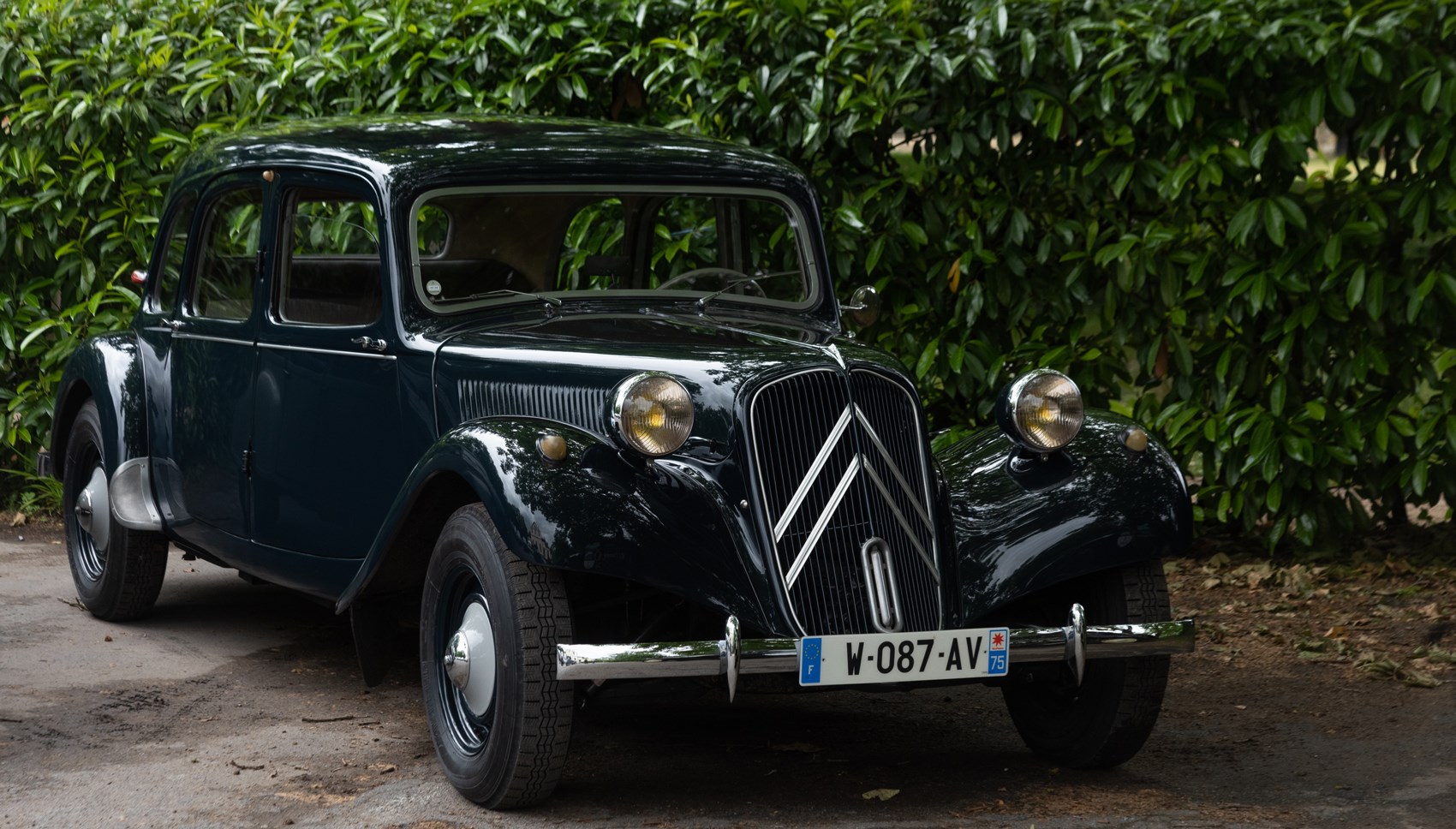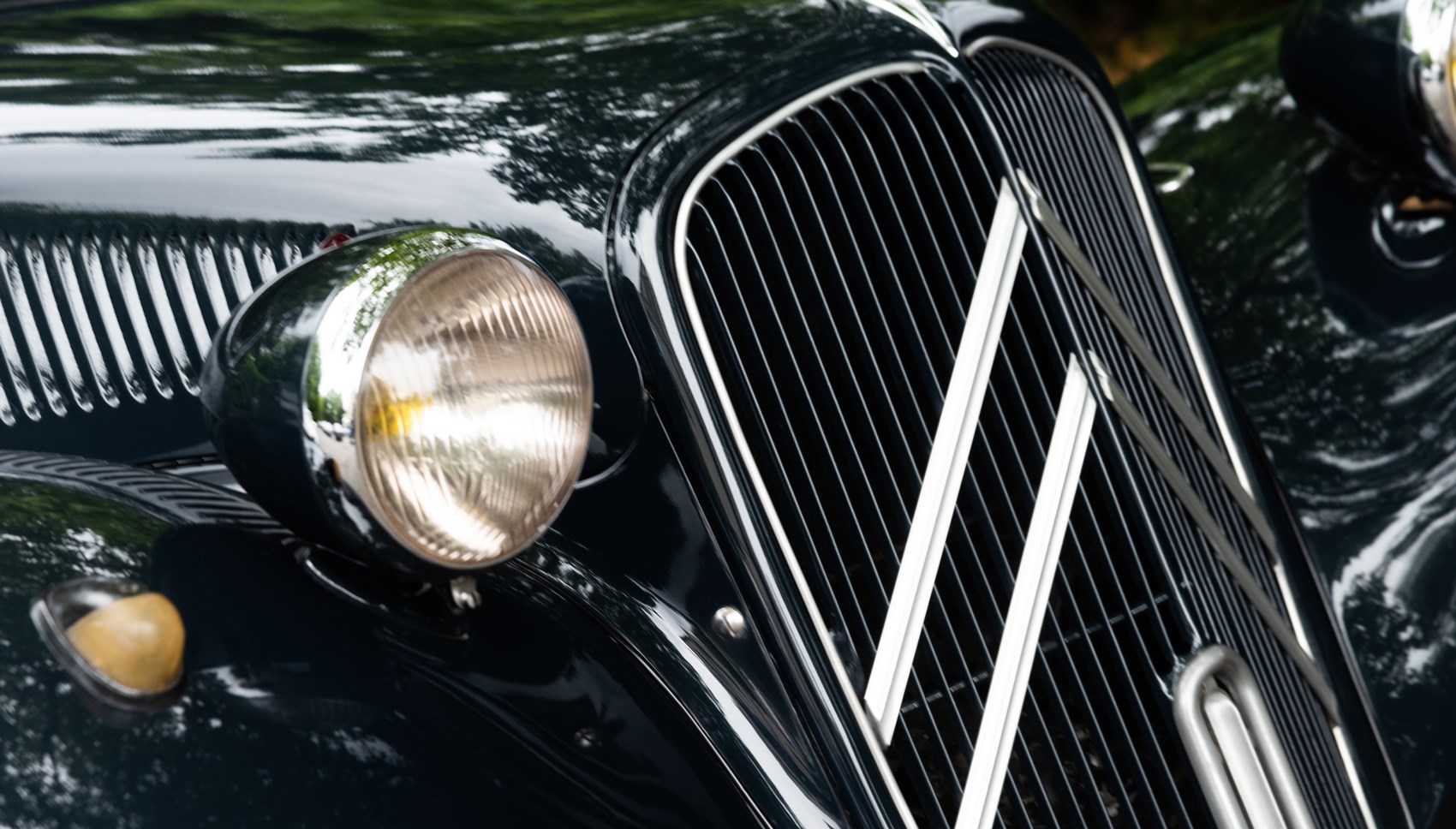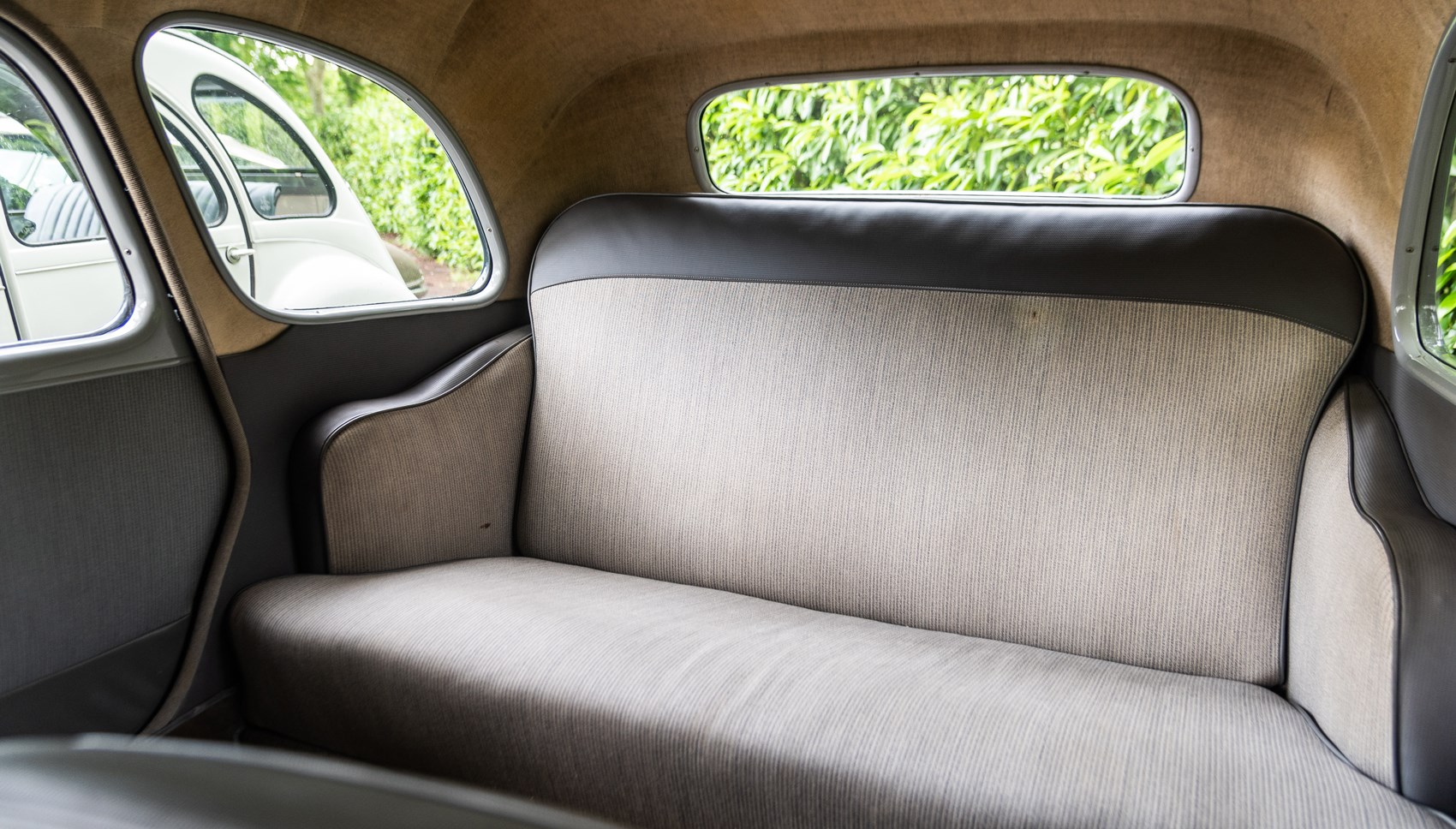► A trip round Paris in a Citroen pioneer
► FWD, monocoque and independent suspension
► How does this Gallic charmer feel today?
The 20th century was full of motoring innovation, but one of the most forward-looking companies has to have been Citroen. And though the gorgeous DS and utilitarian 2CV tend to get most of the love, there’s one car that was arguably more important than either. The Traction Avant was responsible for popularising three major innovations that are commonplace today.
Was it really the first?
The Traction Avant popularised front-wheel drive, monocoque body construction (without a separate chassis) and all-round independent suspension. Notice we said popularised – not invented. Front-wheel drive experiments had been going on since the very early days of motoring. The Lancia Lambda, launched in 1922, was the first monocoque production model, while the Alfa Romeo 8C of 1931 was the first to have each wheel sprung independently.
The 1934 Traction Avant, though, took all three into the mainstream – wrapping them into a package that was attractive and accessible, and producing it en masse thanks to André Citroen pilfering Henry Ford’s mass production techniques for use in France. It was even unofficially named after its propulsion: Traction Avant literally means ‘front-wheel drive’, though the official name was numerical and referred to the car’s tax horsepower.

The result? A car that was so ahead of its time that it still felt contemporary more than two decades later. It was in production until 1957, and even sold alongside the legendary DS for two years. Compare the Traction with contemporary models and the advancements become even more stark. Ford, for example, would not built its first unitary bodied-car until the 1955 Zephyr, and it wouldn’t experiment with front-wheel drive until the 1963 Taunus.
What’s under the skin?
Most Traction Avants use a 1911cc four-cylinder engine. The engine is arguably the most conventional part of the car, and produced around 46bhp – though our later, 1950s model had a heady 57bhp. There were six-cylinder models available, too. All use a three-speed gearbox, whose lever in typical Citroen fashion protrudes vertically out of the dashboard.
The front-wheel drive layout and lack of a separate chassis means this big car is almost impossibly sleek and chic for the era – place it next to a conventional model of a similar age and it appears low-slung and downright rakish. There were practical advantages, too – the weightsaving from a separate chassis improved performance and economy, and the lack of a transmission tunnel meant the interior could have a low floor and absolutely bags of passenger space.

Suspension’s clever, too; the front wheels were independently sprung on a torsion bar and wishbone arrangement, where most contemporaries were still stuck with live axles and leaf springs. The rear was a beam axle attached to trailing arms and torsion bars.
What’s the Citroen Traction Avant like to drive?
Though rakish at launch, by 1955 – when this model was built – the Traction Avant appeared old-fashioned and a little quaint. However, that translates into enduring appeal in 2019. Step through the suicide front doors and sink into the cushioned front seat and you can tell that this is a special automobile.
It’s typically 1930s inside. The painted dash is vertical like a cliff face, and a vast Bakelite steering wheel protrudes from it. The few switches are barely labelled and the vacuum-pump wipers tend to come to a halt right in your eyeline.
There’s not a great deal of space for taller drivers, but we were lucky enough to step into a Familiale model – equipped with three rows of seats and capable of seating nine. Take that, 20th century crossover – that’s practicality for you!
Up front, there’s a starting handle inset into the vast front grille (just in case) but luckily the asthmatic-sounding starter did its duty and the four-cylinder engine roared into life. The three-speed gearbox is operated through a sort of vertical H-gate – it sounds odd, but is surprisingly easy to work in reality.

Visibility is reasonable, and the sensation of looking out across that long bonnet to the separate headlights is a great one. But the best thing to look at is the smiles on other driver’s faces – French motorists really adore this thing, and like the DS it shows off Citroen at its most innovative and classy best.
What’s most striking is how the controls, other than the unassisted steering, all feel light, easy and even modern to operate. There’s a satisfying click to the gearchange, the drum brakes are just about strong enough for modern traffic and the engine’s a surprisingly tractable thing. It pulls beautifully from low rpm – top gear in a Traction Avant was said to be ‘good for everything from 6mph to 60mph’ – making it really easy to drive smoothly.
Is it usable every day?
It’s probably best not to daily drive anything of this age, but the Traction Avant has a reputation for durability and longevity that it’s fair to say eludes most modern French cars. Owners happily take them on longer road trips, touring the Continent and probably having a grand old time while they’re doing so. The usual old car caveats apply – constant maintenance, 1500-mile oil changes and a gentle approach.
It keeps up with modern traffic easily though, and will cruise at 55mph with no issues. As for comfort, this was a revolution at the time thanks to that modern suspension and the super-stiff bodyshell. It holds up today – roadholding, ride comfort and general robustness all feel genuinely impressive. Later models could even be had with an early example of Citroen’s trademark hydropneumatic suspension.
There’s a certain perfection to driving this car through a Parisian suburb – we’re just a cigar and an accordion away from a Gallic fever dream. The yellow headlights of our 11B model completed the picture.

Buying a Traction Avant today will set you back from around £10,000 for one that needs some work. Budget £15,000 for an immediately usable example. Right-hand drive cars do exist – they were built in Slough and named the Light Fifteen and Big Fifteen. They’re also fitted with 12-volt electronics from the factory, a modification many LHD owners will have had retrofitted.
For our money, though, we’d opt for a LHD model. Very early cars are the most desirable and have the spare wheel mounted outside of the car – they’re by far the most attractive, albeit less practical than the later, booted models.
Citroen Traction Avant: verdict
Well, there’s no denying that driving a car this old invites some compromise, no matter how good an example you get. And, while it’s comfortable and handles well, this is neither a powerful car nor a fast one – thrillseekers should look elsewhere.
As a French icon and a motoring milestone, though, this is up there with the DS. We love it!
Check out our Citroen reviews